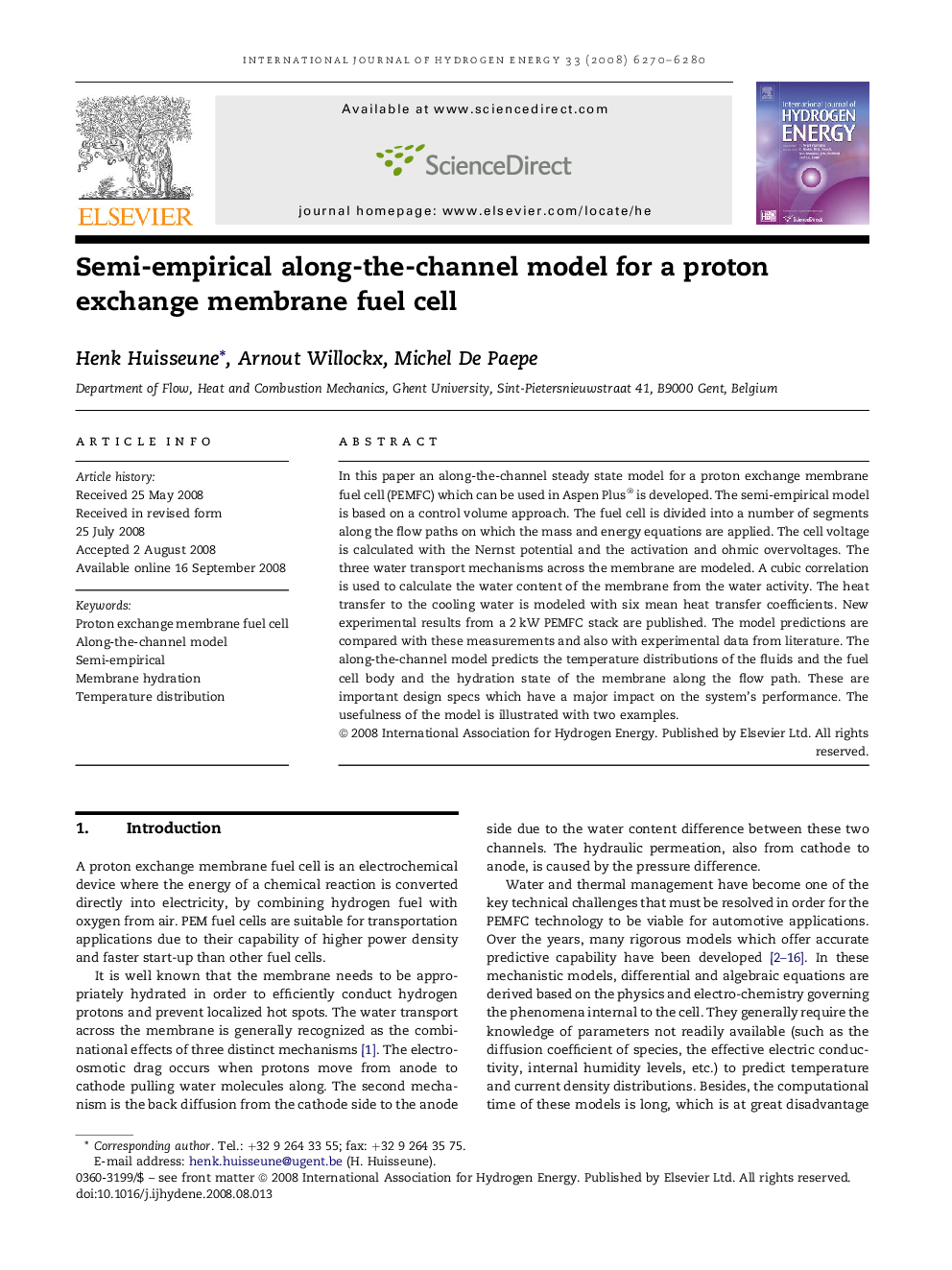| Article ID | Journal | Published Year | Pages | File Type |
|---|---|---|---|---|
| 1283629 | International Journal of Hydrogen Energy | 2008 | 11 Pages |
In this paper an along-the-channel steady state model for a proton exchange membrane fuel cell (PEMFC) which can be used in Aspen Plus® is developed. The semi-empirical model is based on a control volume approach. The fuel cell is divided into a number of segments along the flow paths on which the mass and energy equations are applied. The cell voltage is calculated with the Nernst potential and the activation and ohmic overvoltages. The three water transport mechanisms across the membrane are modeled. A cubic correlation is used to calculate the water content of the membrane from the water activity. The heat transfer to the cooling water is modeled with six mean heat transfer coefficients. New experimental results from a 2 kW PEMFC stack are published. The model predictions are compared with these measurements and also with experimental data from literature. The along-the-channel model predicts the temperature distributions of the fluids and the fuel cell body and the hydration state of the membrane along the flow path. These are important design specs which have a major impact on the system's performance. The usefulness of the model is illustrated with two examples.
